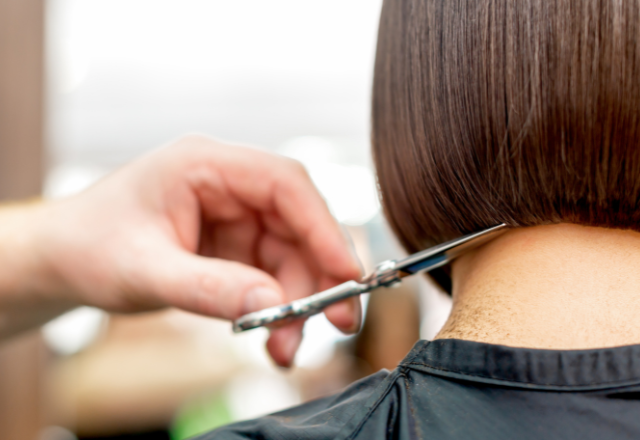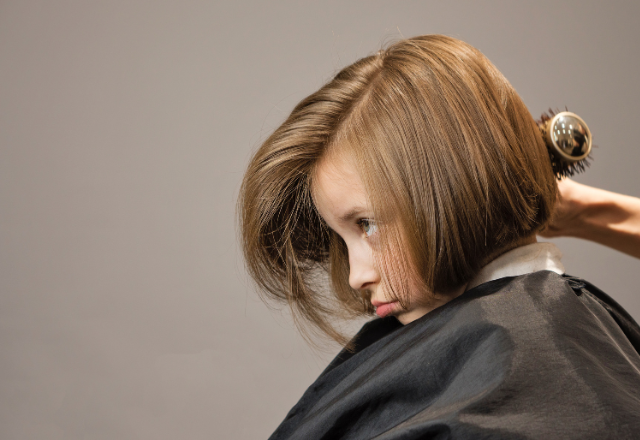Shall I cut my hair short?
Yes, if you’re ready for a fresh look, want something easy to manage, and love the idea of highlighting your facial features—short hair could be the perfect change. It’s stylish, practical, and can make you feel empowered. However, it’s not for everyone. Think about your face shape, daily routine, and whether you’re okay with more frequent trims before making the cut.
Short hairstyles can make a huge impact—not just visually, but emotionally too. Whether you’re seeking a total reset, chasing comfort, or just need a practical solution for your busy lifestyle, going short might be the transformative step you need.

Is Short Hair Right for Me?
Short hair works well for many people, but it’s not a one-size-fits-all decision. One of the first things to think about is your face shape. Oval and heart-shaped faces tend to suit a wide range of short hairstyles, while round or square faces may benefit from styles that create volume at the crown or soft layers to balance the proportions.
Your hair texture also plays a big role. Fine hair might look fuller with a blunt bob or pixie cut, while thick or curly hair could benefit from a more textured approach to prevent puffiness or unwanted bulk. Consulting a good barber can help you find a cut that works for your texture and volume.
Then, consider your daily routine. If you’re someone who prefers to wash and go or only has a few minutes in the morning, short hair may be a perfect low-maintenance option. But if you enjoy experimenting with styles or want to pull your hair back, short hair may feel limiting.
Finally, think about your lifestyle and personality. A bold, confident personality often embraces short hair as an expression of self. However, if you enjoy versatility or are hesitant about change, you may prefer to ease into a shorter length gradually. It’s also worth considering how this new look might reflect your professional setting, social circles, or even seasonal preferences.
If you’re someone who travels frequently or has a physically demanding job, short hair might bring more convenience than you expect. The ease of styling and faster drying times can be a game-changer.
Benefits of Cutting Your Hair Short
One of the biggest benefits of short hair is low maintenance. Less hair means less time drying, styling, or detangling. Many people with short cuts report feeling more liberated and less burdened by haircare routines.
Short hair also feels cooler and lighter, which is ideal during hot weather or for active lifestyles. If you’re into fitness or always on the move, the comfort of short hair can be a major plus. It won’t stick to your neck or require frequent adjustments during a workout.
It’s also a great way to get a fresh start. Cutting off dry, damaged ends can instantly make your hair look and feel healthier. It can be the reset your hair needs to grow stronger and shinier.
Perhaps most importantly, short hair can offer a style refresh. A dramatic change in hairstyle often boosts confidence and gives a sense of renewal. Whether you’re starting a new job, entering a new life chapter, or just want to try something bold, a short haircut can be the visual transformation you’re looking for.
Many clients also find that short hair emphasizes their facial features—bringing more attention to the eyes, cheekbones, and jawline. With the right cut, it can be incredibly flattering and empowering.
Short hair also dries faster, needs fewer products, and makes heat styling easier and quicker—saving you both time and money over the long term.
For additional haircare guidance, you can also check the NHS guide on how to maintain healthy hair.
Drawbacks to Consider
Despite its many perks, short hair isn’t for everyone. One of the most noticeable downsides is limited styling options. You won’t be able to braid, bun, or tie it back as easily. If you like changing up your look regularly, this could feel restrictive.
Short styles also require more frequent trims to keep their shape. You may find yourself visiting the barber every 4–6 weeks to maintain the style, which adds time and cost. Compared to longer styles that can go 2–3 months without a cut, short hair demands more upkeep.
Additionally, regrowth takes time. If you decide you don’t love it, you’ll need patience while it grows back. During the in-between phase, styling can be more difficult. You might go through a few awkward stages before reaching your desired length again.
Short haircuts can also feel too bold for some, especially if you’re used to having the comfort and familiarity of longer hair. If you rely on your hair as a styling tool—say, for face-framing or adding volume—transitioning to a short cut might take some getting used to.
For some people, there can be emotional attachment to long hair. It’s a big shift, and it’s okay to feel unsure.

Questions to Ask Before You Cut It Short
Before going for the chop, ask yourself:
- Are you ready for a dramatic change?
- Do you have time for regular trims?
- Will this style fit your lifestyle, work environment, and wardrobe?
- How confident are you with minimal styling options?
- Have you tried styling your hair up to mimic a short cut?
You can also try visualising the look with a virtual hairstyle app or gather reference photos for your barber to give input on what will suit your features and personality.
Can Short Hair Suit Everyone?
Yes—but only when it’s tailored to the individual. The key is choosing the right short hairstyle for your specific features. A skilled barber or stylist can help you select a style that complements your face shape, texture, and overall aesthetic. Remember, short doesn’t have to mean boring. There are dozens of styles—from soft crops to edgy fades—that can match anyone’s personality.
Short hair can be highly versatile within its own limits. A clean taper, a stylish pixie, or a textured crop can all offer modern flair and personality without needing much maintenance. Discuss with your barber what you want the look to say about you—elegant, professional, bold, playful? The right cut can speak volumes.
Even within “short hair,” there are levels—from jaw-length bobs to nearly shaved styles. Choosing the right one is about customizing, not conforming.
If you’re still unsure, read our men’s hairstyle trends for 2025 or discover how to groom like a pro to feel more confident in your style.
Final Thoughts: Should You Cut Your Hair Short?
If you’re still asking, “Shall I cut my hair short?” the answer lies in knowing yourself. If you’re open to change, want less fuss, and love a sharp, expressive look—short hair could be your next great move.
Still hesitant? Start with a mid-length cut as a stepping stone. You can test how it feels and how manageable it is before going ultra-short. And when in doubt, consult a barber who understands your goals. At Barbertainer, we help clients every day choose hairstyles that work for their lives and look great.
Cutting your hair short can feel like a big decision—but it can also be an empowering one. Trust the process, ask for guidance, and be bold enough to try something new.
To better understand how hair types and scalp health can affect your cut, check out this scientific overview from the British Journal of Dermatology.
Ready to try a bold new look? Book your appointment today or learn more at barbertainer.com.






